On warm summer days in London, when offices wind to a close and people flock to wide, green parks to roll up their sleeves and bask in the evening sunlight, one collective sentiment floats through the air: “Why would you want to be anywhere else?” It is the kind of thought everyone has for their hometown from time to time, yet it is one that evades Londoners for most of the year thanks to its notorious weather. But this past summer was a good one. The mood was bright. And there was a lot of beer to be drunk.
That’s the feeling when I meet Steve Ryan, co-owner of 40ft Brewery, in a café not far from his house in Dalston, East London. It looks out over a newly developed square of apartments—big, red brick affairs encircling a row of water fountains. Two men in biker jackets watch their kids block the spouts before jumping back to let a cool jet of water rush into the air. The café is tiled with distressed wooden tables and copper-dipped light bulbs swinging above the bar.
This once deprived part of London has seen monumental changes over the last couple of decades. It is the area that my West Country grandparents would have avoided on their bi-annual trips to the capital. And yet here we are, high up in the East where Turkish barber shops live beside coffee houses, and the local market sells trotters and plantains in front of a tiki bar with live jazz music and craft burgers. Along with the influx of moneyed outsiders, speciality food and shabby allotments turned art studios, East London has also become one of the most prolific producers of craft beer in the country. In an act of artistic rebellion against the giants of the food and drink world, small businesses across industries have brought the focus back to slow, careful production. Coffee is roasted in-house. Meat is locally-sourced. Wine is natural. And East Londoners are lapping up every last drop.
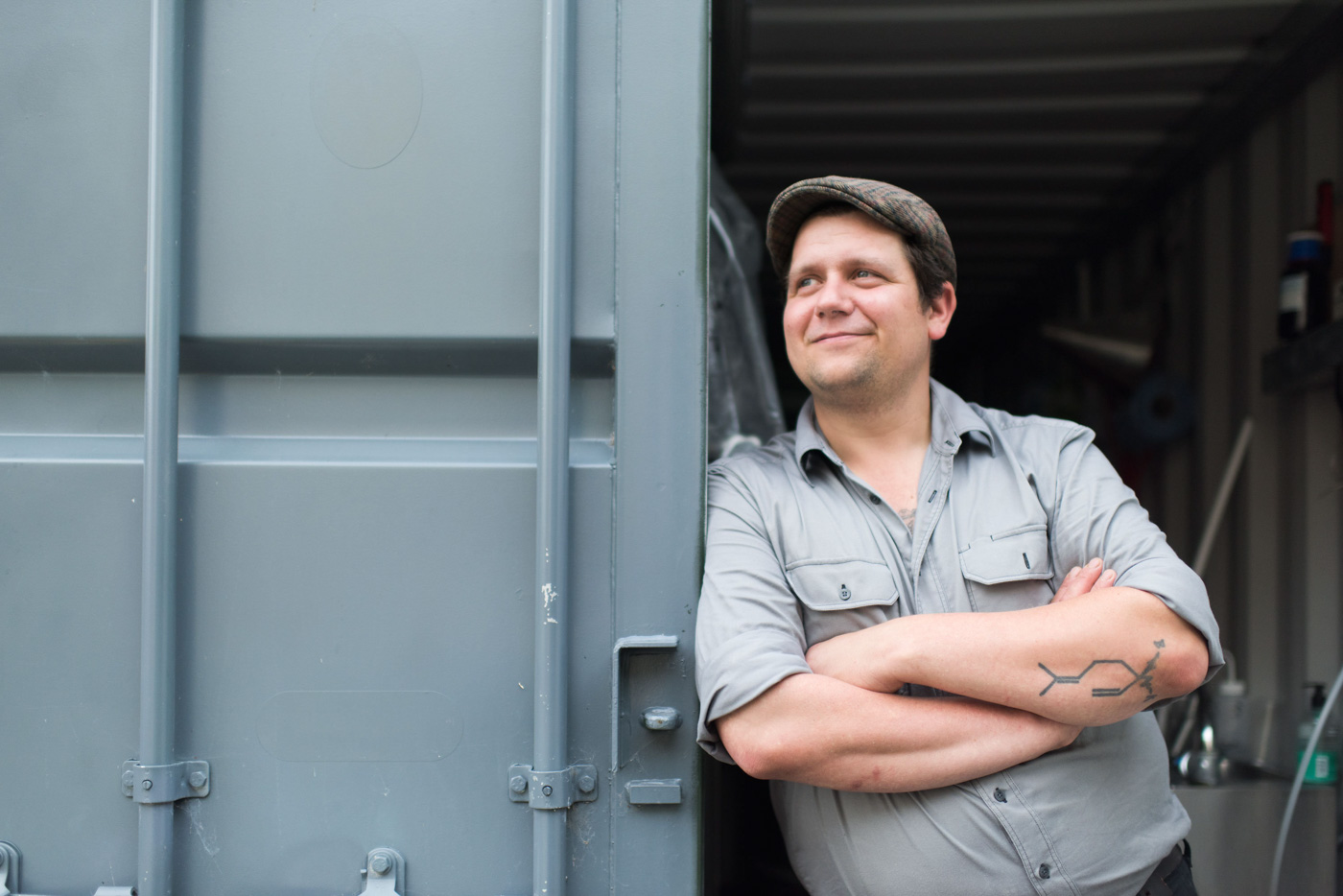
Ryan launched 40ft Brewery two years ago. Originally from Dublin, he grew up drinking “shitty, shitty beer” in local pubs, becoming “immune” to the four or five core beers that eclipsed British drinking holes after the 1950s. “Your options were few and far between. I got used to drinking lagers that tasted like fizzy water,” he says. It was not until he began travelling back and forth visiting a friend in Los Angeles that he got a taste for real pale ale. “He’d take me to these bars with 30 taps of beer. He and his friends just assumed I would know all of these amazing European beers,” he explains. “But I didn’t know any. They were so disappointed, and I felt disappointed in myself too.” Learning the basic process of beer-making from his friend in L.A., Ryan returned home and began experimenting with brewing.
“The first time I drank American IPA, it revolutionized my way of seeing beer. This wasn’t just beer. It was something more,” he says. “I needed to bring it home.” This was in 2011, a year after Ryan moved to London. He lived and worked with a Swedish photographer named Andreas Pettersson, whose brother Fredrik joined them soon after in their beer pursuits. Inside their London house, the three started brewing together once a week, experimenting with different shades, flavors and strengths of beer, “getting high on our own supply,” as Ryan recalls. It was not until they met Cologne-born Ben Ott, a brewer at the colossal Truman’s Brewery, that their hobby became a serious craft.

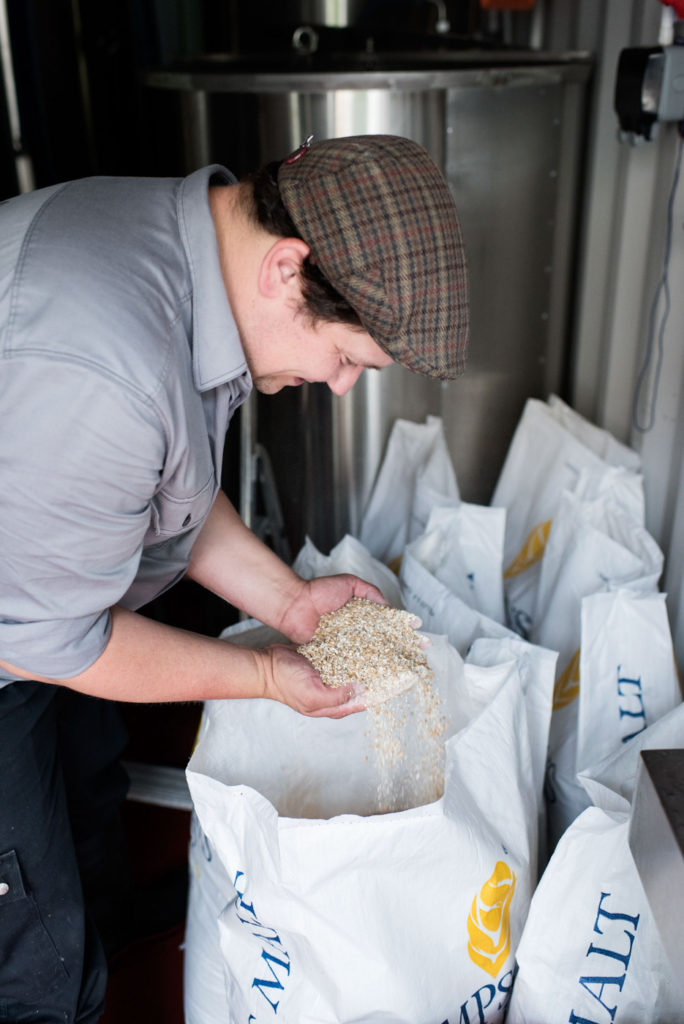
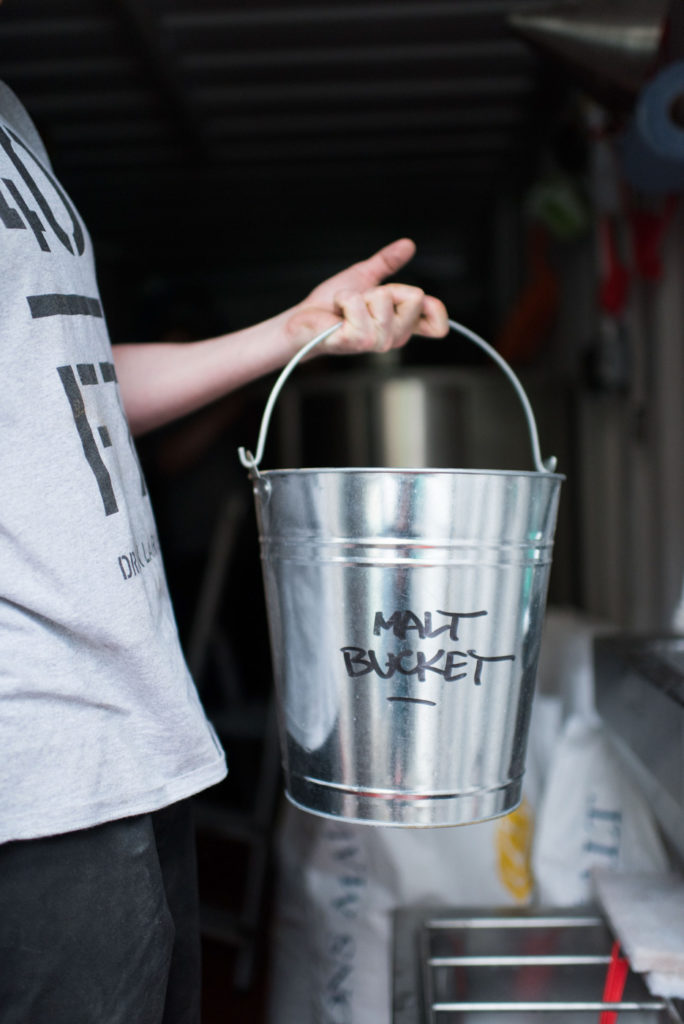
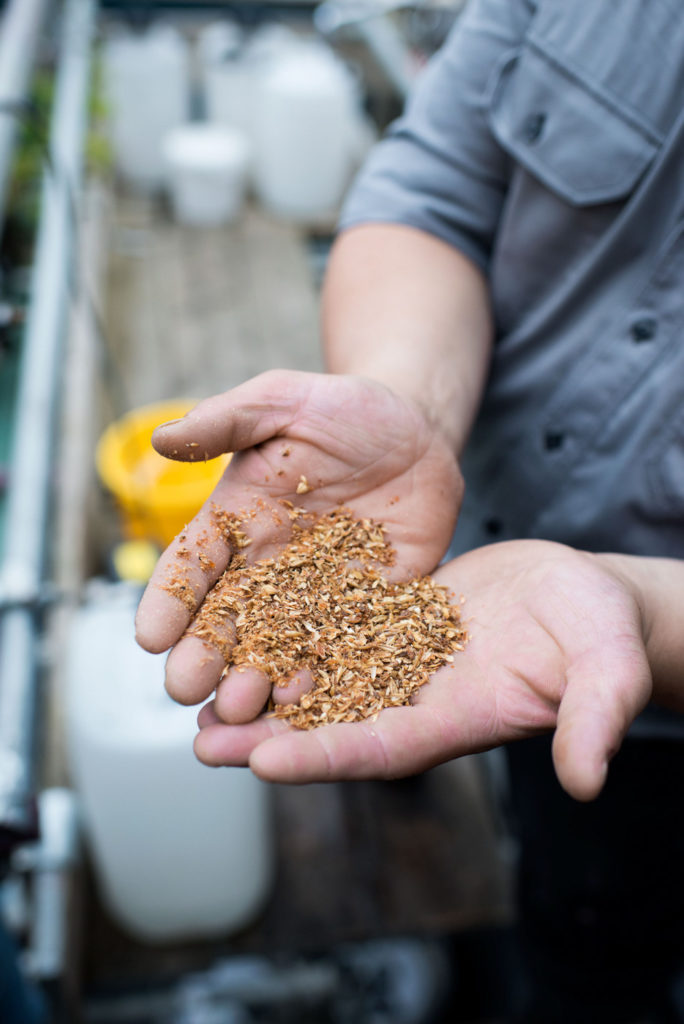
“We were basically just drunken artists before Ben came along,” Ryan says. “He is an artist when it comes to beer. He’s just exceptionally talented. It suddenly became more real and serious. I wonder if we would have still done it if we’d known what we were getting ourselves into,” he ponders for a second before deciding. “No, we definitely would have.”
The group began searching for a permanent space to make their beer, when the parking lot behind Ryan and Pettersson’s office freed up. With Hackney council on a mission to reduce road usage, the lot was turned into a start-up park, with low-priced shipping containers up for grabs. The new brewers moved into two 20-foot steel containers, one stacked on top of the other like building blocks, and named themselves 40ft Brewery.
From the outside, 40ft is the epitome of all that is “hip” about East London—two Swedish brothers, a German brewer, and an Irish photographer making beer in a reclaimed container in East London. But to the four friends—who come together inside the narrow walls of the container and create some of the area’s finest beers—trend is unimportant. They are in it for the love of beer, and for the unending possibilities of this historic craft.
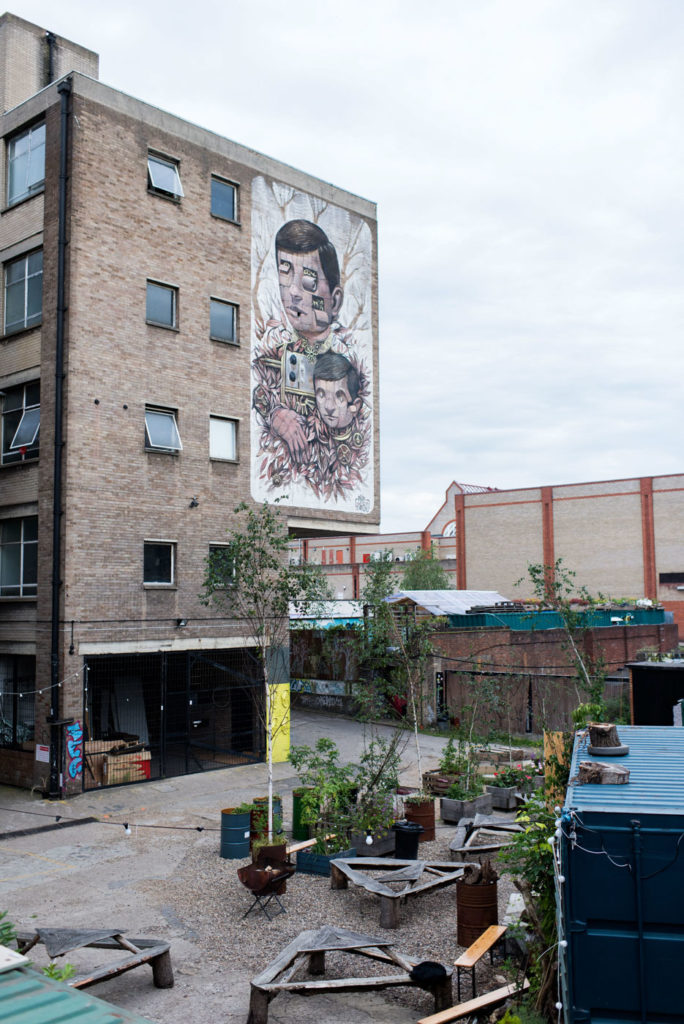

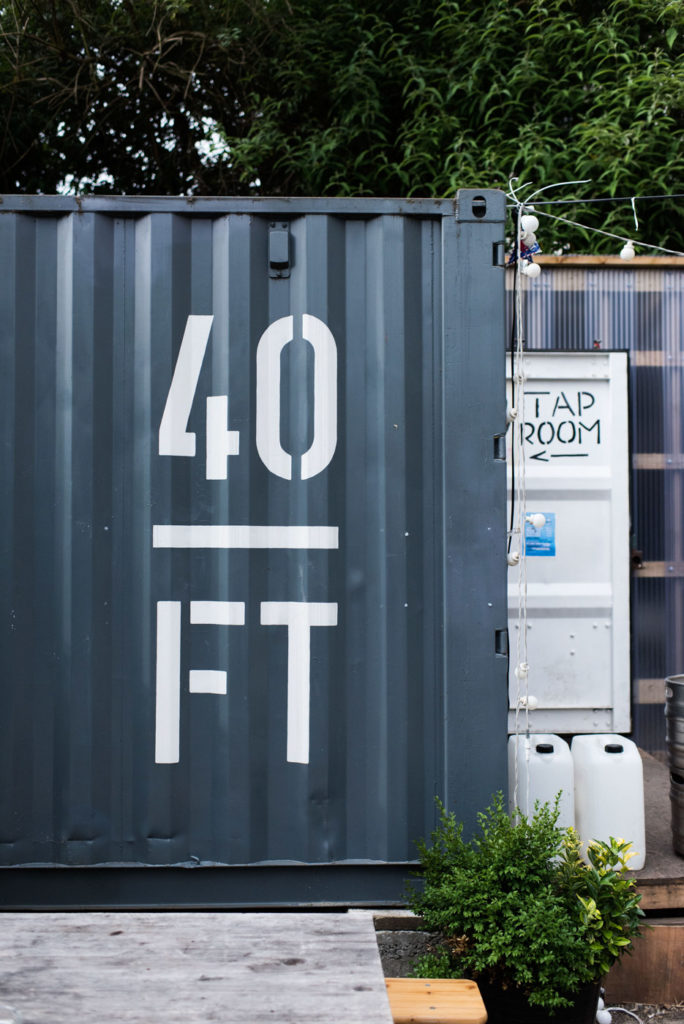
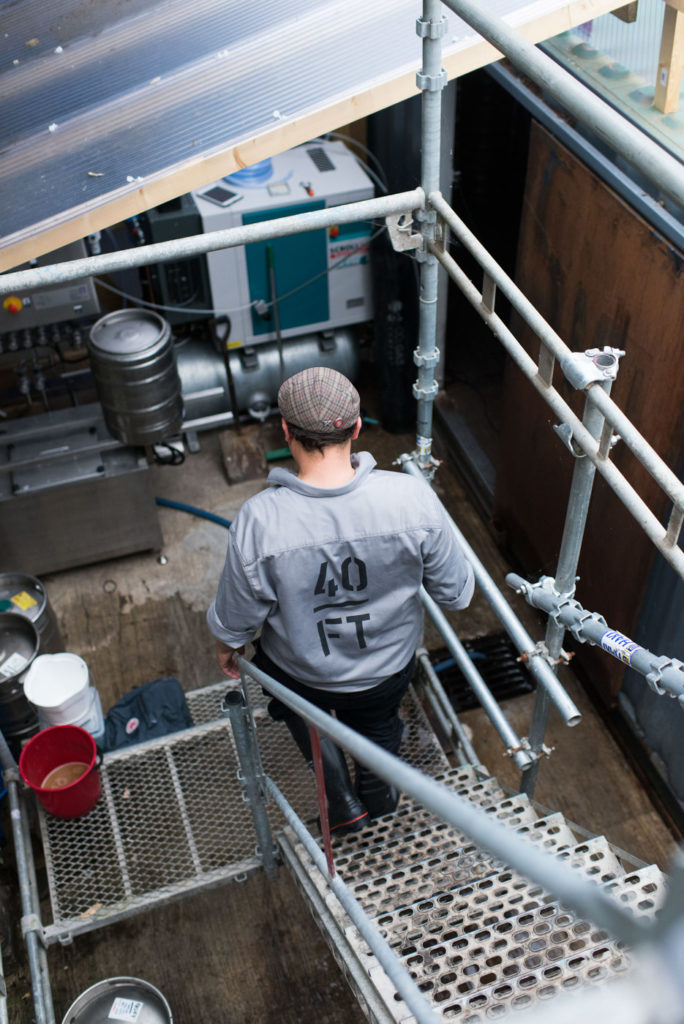
The English have been swigging beer since before the Romans invaded. During the Middle Ages, it was considered safer to drink than water. Real ale courses through our history books, with Trappist monks often cited as some of the earliest brewers, operating inside the walls of their stone monasteries. Around the 15th century, hops were being imported from western Europe, deepening the flavor of traditional brews. Possibilities of what beer could taste like began to unravel, and hundreds of years of experimentation followed.
Hop harvesting provided work for thousands in the 18th century, with much of the crop covering the verdant lands of Kent, in southeast England. Yet somewhere around the 1950s, the time of white-toothed television advertisements and microwaves, the quality of beer began to dwindle. “Suddenly it didn’t matter so much about the taste; it was about advertising and getting the consumer to buy for the home,” Ryan explains. “It stopped being about the beer and started being this aspirational product, representing an unattainable lifestyle.”
Ryan acknowledges the role of mega-breweries in lowering taste expectations. “After the war, we were looking for ways to feed people, so we replaced quality products with mass-produced stuff. We went from artisanal bread to white sliced. It’s the same when it comes to beer,” he says. “Big breweries have found a way to produce their products on a huge scale. And when you are producing something at that level, you have to cut corners.” At 40ft, there are just two “core” beers: Larger, so named for its similarity to traditional lager, but bigger and brighter in flavor, and an American-style pale ale—soft and hoppy in body with a crisp, bitter finish. Both glimmer from the shelves of local bars in simple, armored silver cans.
For Ryan, the finest beers spring from traditional brewing techniques, using only these core ingredients: malted barley, water, hops and yeast. It is the flavor, scent and depth of beer that those monks would have tasted all those centuries ago. The preparation is done inside their narrow shipping containers, which have become the natural talking point surrounding the brand. “I don’t want the shipping container to be our ‘thing,’ though,” Ryan says. “I know it’s hard to move away from the reclaimed East London thing. But really, we just want to be known for making great beer.”
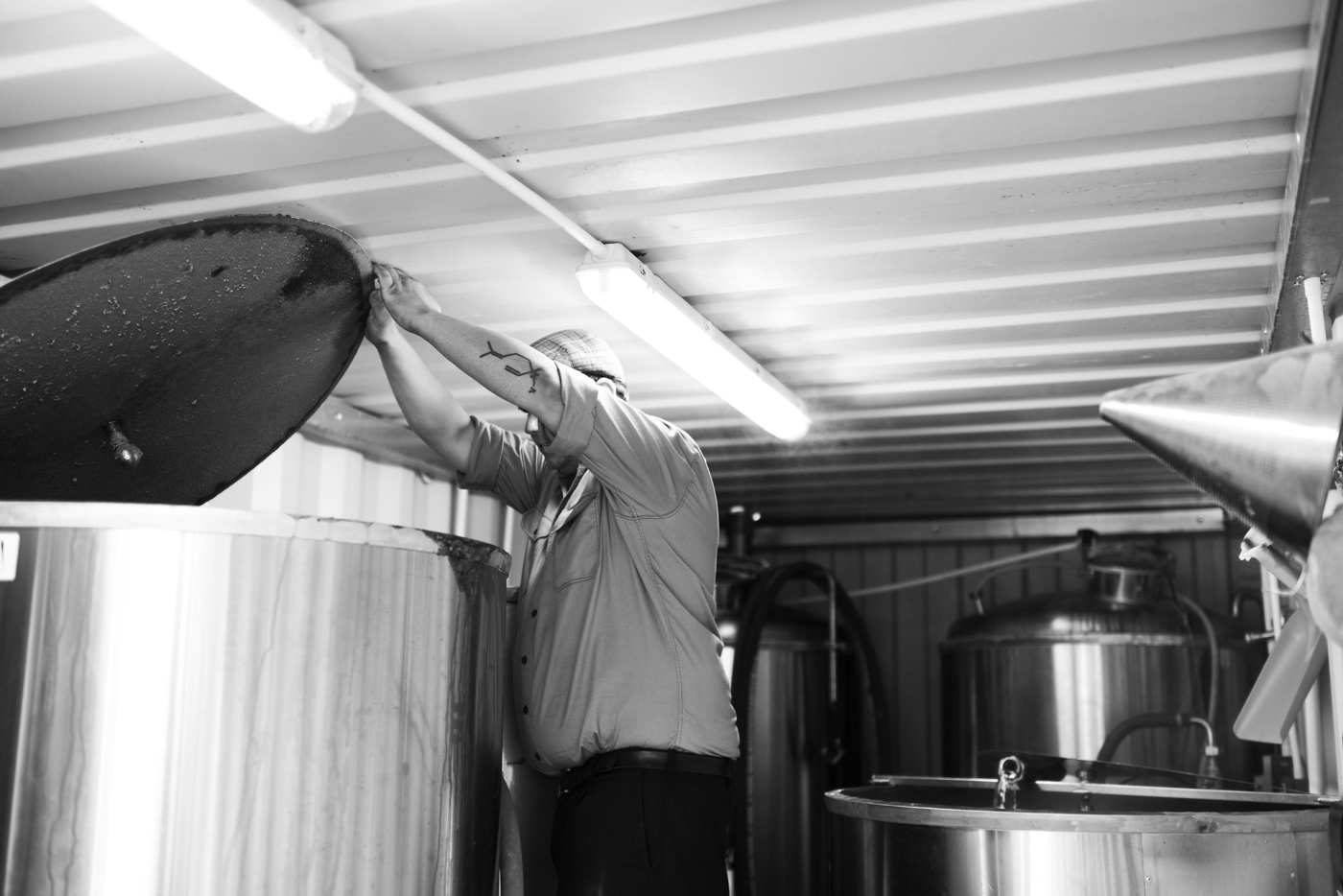
When 40ft’s tanks first started bubbling last year, they were the 77th microbrewery in London. There are now over a hundred. Compare this to the ‘90s, when there were around six, and it is easy to see how the face of the London beer is changing. Yet most commercial breweries like Ryan’s are not vying to outdo the giants of the beer world. To him and many of his peers, small production is the only way to manage quality. “The point is not to compete with the big breweries,” he tells me. “We want to keep growing organically. After a year, we are at capacity. We want to stay local. I do not want to be the next Heineken.” And local, they truly are. Each can of 40ft beer is a snapshot of the local area. The water inside it is from London, the malt is predominantly English, and the “spicy, earthy” flavors come from English hops. “We use English ingredients wherever possible. And we feel like beer shouldn’t have to travel far,” Ryan says. He laughs, “In fact, if it leaves Hackney we call it 40ft Export.”
40ft has recently added another container to their little plot. This one acts as their tap room, open on weekends for guests to file in and taste their core offerings, as well as experimental brews. “East London bar service can be pretty poor. In Ireland, it’s super friendly, they smack out like 20 beers at a time,” Ryan says. “Here, people are checking their Tinder and maybe pulling a single pint at a time. We want to be the antithesis of that in our bar. Everyone who comes in gets welcomed. We’re over-friendly, and we give free tours and tasters. We introduce them to the other people in there. It’s such a confined space. We want people to communicate. Beer always helps with that!”
The craft movement celebrates the details, the infinitesimal shades of products and the people behind them. It celebrates the art of creating something that will disappear in moments, and is all the more valuable for it. Mega brands provide a comfort to many people. They can never feel far from home if the golden arches appear around the corner, or the condensation is running down the iconic green bottle of their trusty lager. But through small brands, we can travel. They help us to understand the personality of a place. “Local beers should be for local people,” Ryan says, as we step out into the late afternoon sun. “When you go to a different town, you want to go to a restaurant that is only in that one town. It begins a conversation about a place. It should be the same when it comes to beer.”







Our comments section is for members only.
Join today to gain exclusive access.